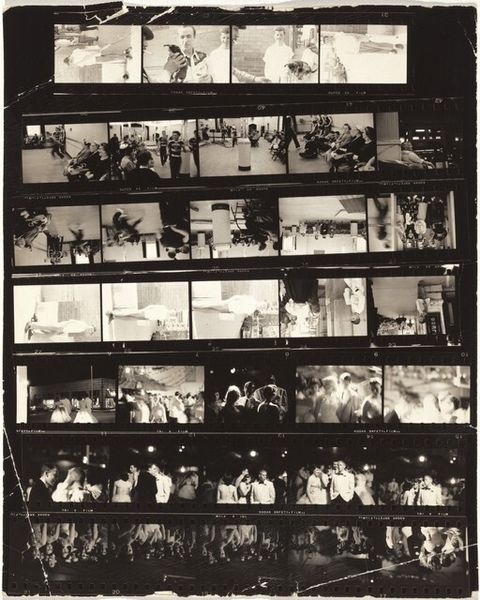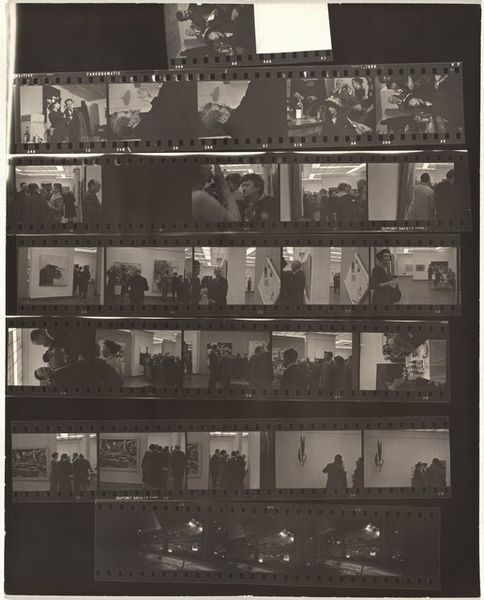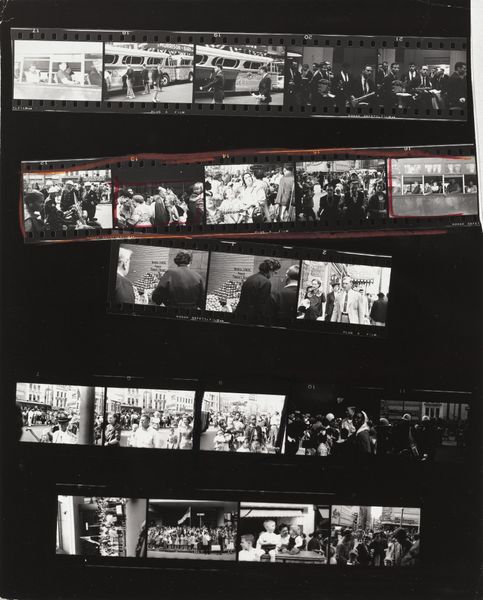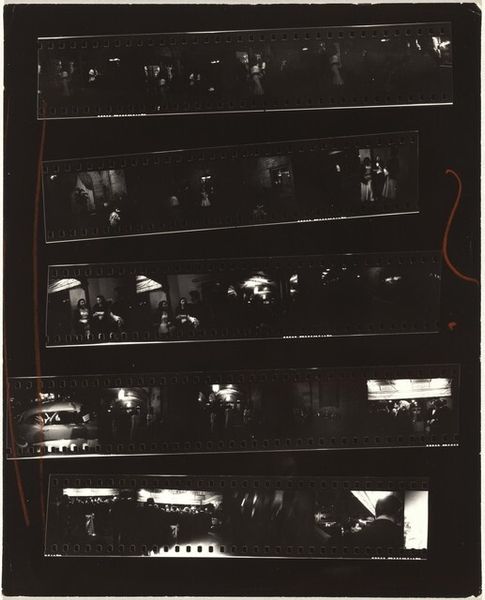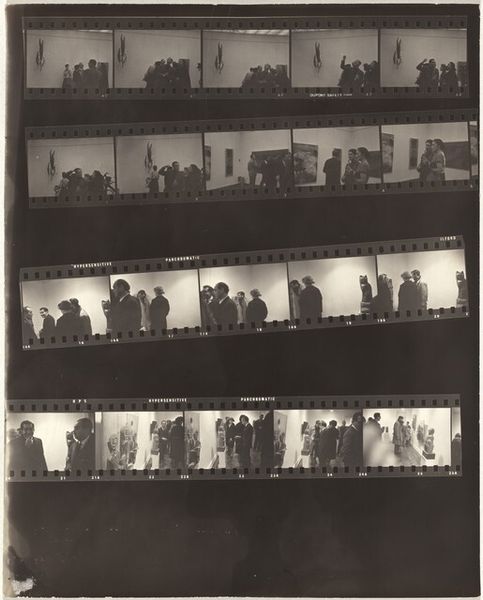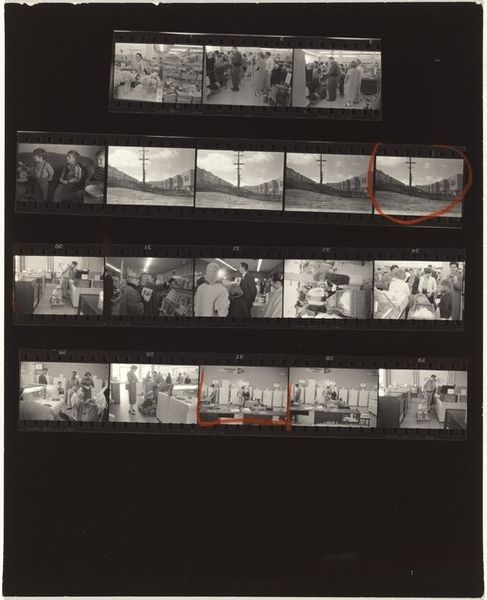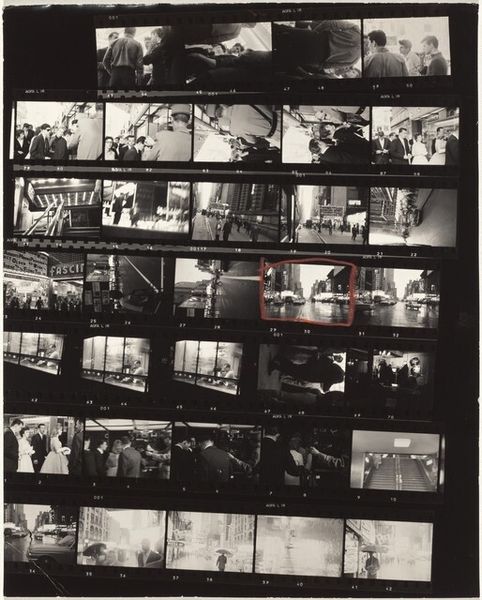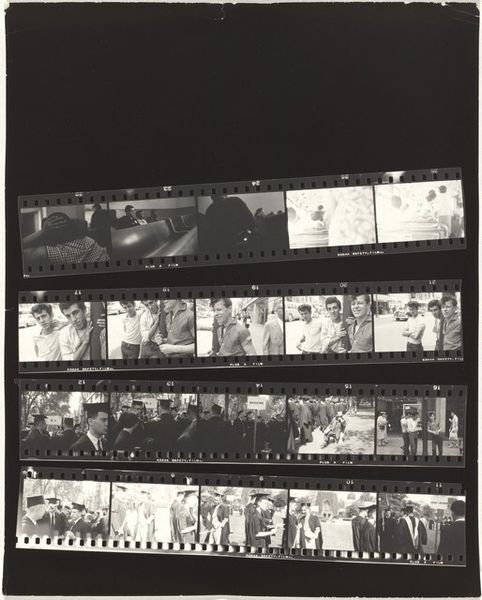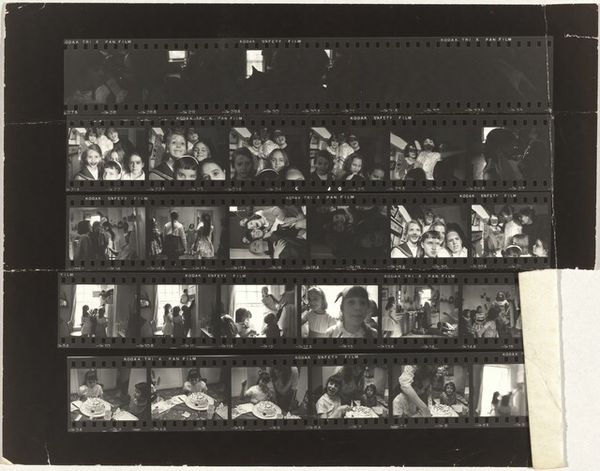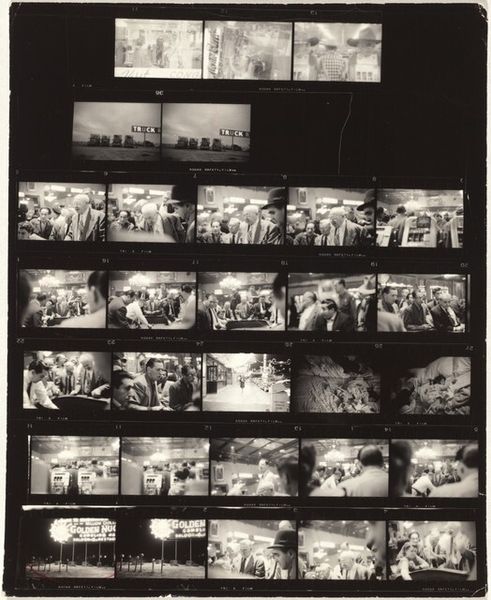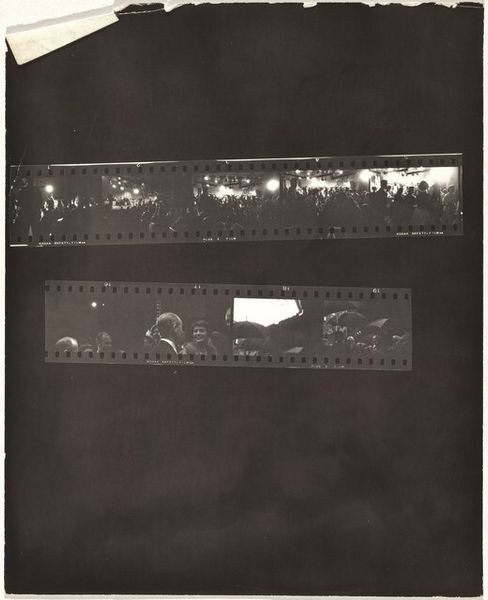
print, photography, gelatin-silver-print
#
portrait
# print
#
street-photography
#
photography
#
gelatin-silver-print
#
cityscape
#
modernism
#
realism
Dimensions: sheet: 20.2 x 25.2 cm (7 15/16 x 9 15/16 in.)
Copyright: National Gallery of Art: CC0 1.0
Editor: This is Robert Frank’s “Street scene at night--Los Angeles” from 1956, a gelatin silver print. There’s something very glamorous but also a bit uneasy about it; it captures a group of elegantly dressed people emerging into a throng, maybe from a theatre? What do you see in this piece? Curator: I see a powerful visual statement about American society in the mid-1950s. Frank, as a Swiss immigrant, brought a unique outsider's perspective. The image, beyond its seemingly glamorous surface, hints at the underlying tensions of race and class. Notice the almost theatrical lighting, and how it throws certain figures into stark relief while obscuring others. What story do you think this choice of composition tells? Editor: Well, it’s interesting you say that. I was so drawn in by the opulence; the coats and the cars, and assumed it was just an iconic snapshot of wealth. Curator: And that’s a completely valid first reaction! But think about who is being highlighted and who is in the background. Frank’s work often challenged the dominant narratives of the time, exposing a more complex and sometimes unsettling view of the American Dream. This was also the height of the Civil Rights Movement, something surely impacting Frank's perception. Editor: So you're saying that what looks like celebrity is juxtaposed with potentially simmering unrest, hinted at through framing and light? Curator: Precisely. Consider also that Frank's work broke from established photographic traditions. His images are often grainy and off-kilter, contributing to that sense of unease and a challenging, subjective viewpoint. How does this inform the subject of Los Angeles in 1956, in your opinion? Editor: This conversation really encourages me to look beyond initial impressions! Thanks for guiding me to analyze beyond the aesthetic of the print. Curator: It's about digging beneath the surface and considering the social and historical context in which art is created and consumed. Always ask: who is included, who is excluded, and what narratives are being amplified or silenced?
Comments
No comments
Be the first to comment and join the conversation on the ultimate creative platform.
